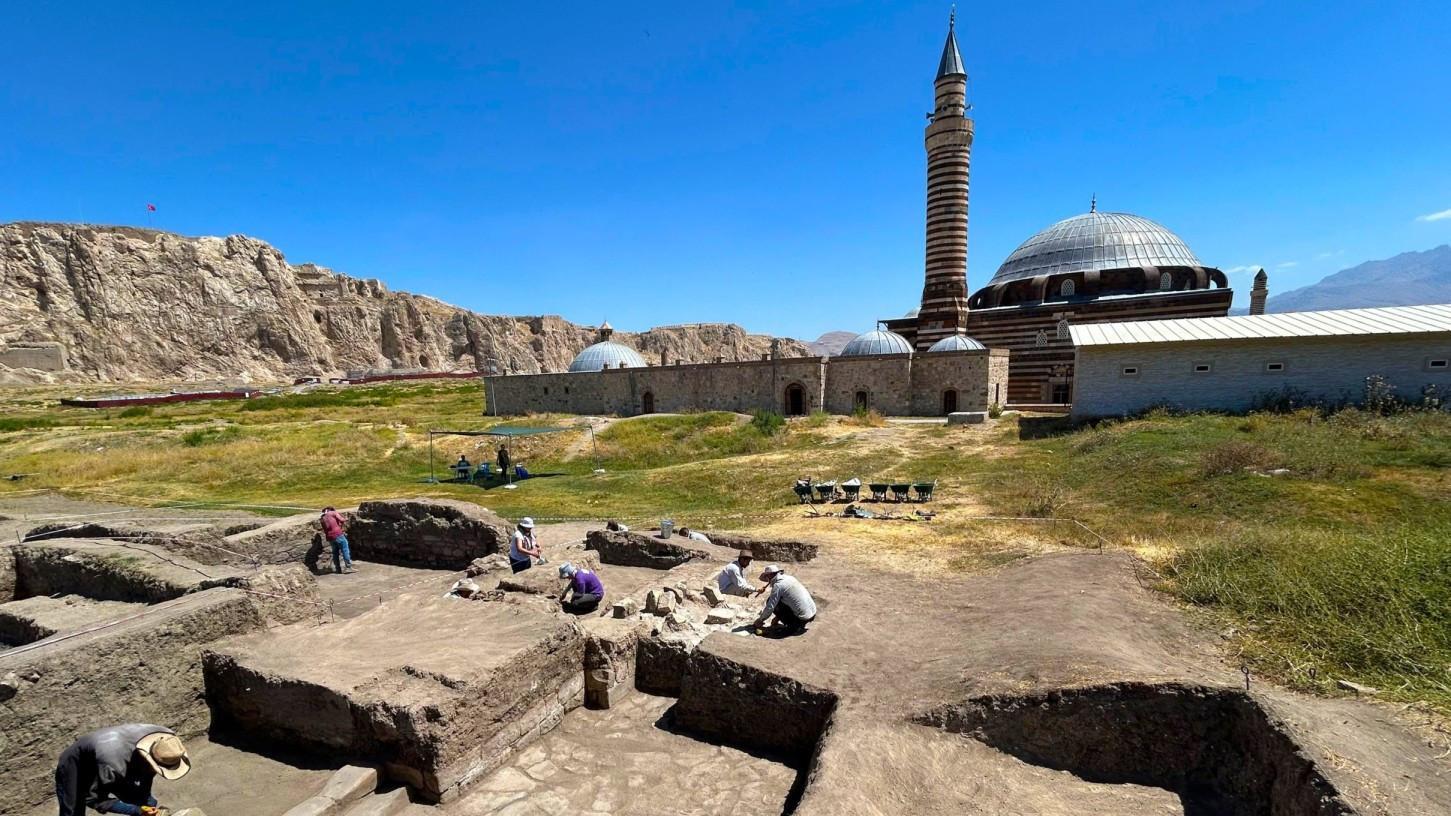
Excavations in the Old Van City, located south of the historic Van Castle that carries the legacy of many civilizations, have uncovered numerous cannonballs and bullet casings dating back to World War I.
Van Castle, which has stood since 3000 B.C., bears traces of the Urartian, Scythian, Median, Persian, Roman and Sassanid civilizations, while the Old Van City, built on an area of nearly 450,000 square meters, holds remnants from the Seljuk and Ottoman eras. The city was conquered in 1069 by Seljuk Sultan Melikşah and remained under the rule of various Turkic-Islamic states until the Ottoman period.
At the beginning of the 20th century, Old Van City suffered heavy destruction during Armenian uprisings and the impacts of World War I. Excavation and restoration works, launched in 2024 under the Culture and Tourism Ministry’s “Heritage for the Future” project, aim to preserve the city’s architectural heritage for future generations.
The works are being carried out by a 15-member team led by Professor Gülsen Baş Terzioğlu of Van Yüzüncü Yıl University’s (Van YYÜ) Department of Art History.
Terzioğlu said the 2025 excavations at the 19th-century Ottoman barracks in the city’s southwestern corner had yielded significant remains. “We are currently working at the entrance of the barracks built during Sultan Abdülaziz’s reign, on the eastern side of the structure. The findings are highly remarkable. Both the architectural fragments and smaller traces provide important data on the function and period of the building,” she said.
Terzioğlu noted that many burned layers, charred documents, military merit medals, cannonballs and bullet casings had been uncovered. “Barracks were not only places where soldiers were housed and trained, but also spaces for administrative and logistical activities. These findings shed light on the political and military atmosphere of the late Ottoman period in Van,” she added.
Terzioğlu noted that more than 10 cannonballs of various sizes were discovered, some of which explained the scale of the destruction in the barracks.
“The number of bullet casings exceeds 800. Our epigraph experts are analyzing the burned documents one by one. Once transcribed and evaluated, these records will provide new and detailed insights into the regional military organization in the late Ottoman era,” she said.